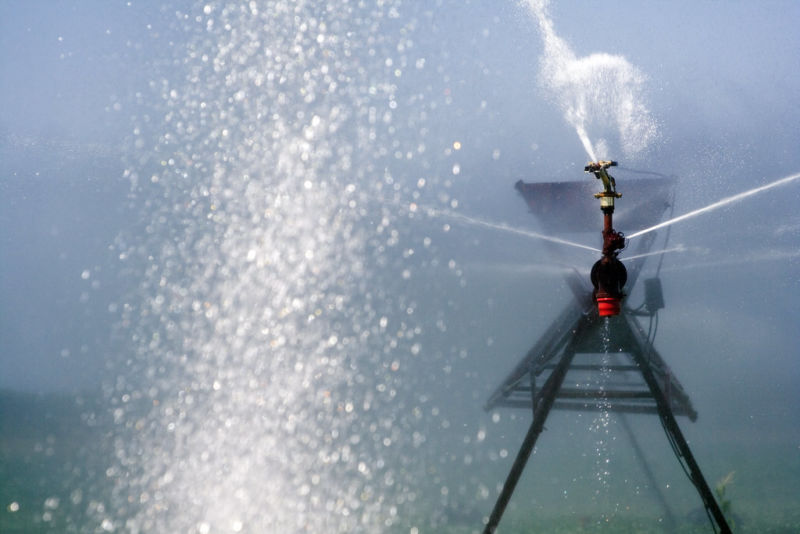In the US, wells being drilled ever deeper as groundwater vanishes

Enlarge / An irrigation system working in a field of soybeans. As surface water becomes less reliable in the face of climate change, groundwater will become an increasingly crucial resource. (credit: flickr user: Nic McPhee)
Groundwater is an "invisible resource," writes environmental engineer Debra Perrone. It "flows slowly under our feet through cracks in rocks and spaces in sediments," she says, contrasting it with the more visible and obvious dams and rivers on the surface. This invisible resource is a quiet hero, supplying around a quarter of the US' daily freshwater needs.
Its distributed nature makes groundwater a challenging resource to manage. Unlike on the surface, where we can manage through public infrastructure like dams and reservoirs, groundwater is mostly tapped through millions of wells drilled by individuals, businesses, and farms. But current levels of groundwater use are not sustainable: resources are being steadily depleted as groundwater use outpaces natural replenishment.
This depletion means that shallower wells may run dry. Across the US, people are drilling deeper and deeper wells, report Perrone and her colleague Scott Jasechko in a paper in Nature Sustainability this week. That suggests that the easy-to-access water is already vanishing. But it's also not sustainable to keep going deeper.
Read 9 remaining paragraphs | Comments